In this oft-visited post about my hip and lower back “weak link”, I share go-to core yoga practices that are generally accessbile and effective for strength, stability, and flexibility-of the body and the mind.
Here are three more core practices offered frequently in class and as reminders for your home practice. Our friends at Canyon Ranch list the many benefits of a strong core. I particularly focus on the benefits of core strength AND flexibility (flexibility is a special focus of yoga, of course) for balance and activities of everyday living. These include getting in and out of cars and chairs, lifting babies, and fall prevention.
Remember, this is yoga: breathe, notice, pause, observe, and learn.
Sphinx
![By MusikAnimal (Own work) [CC BY-SA 3.0 (http://creativecommons.org/licenses/by-sa/3.0)], via Wikimedia Commons The strong , majestic, and calm great Sphinx of Giza](https://yogawithbonnie.com/wp-content/uploads/2016/06/Great_Sphinx_of_Giza_May_2015-300x200.jpg)
Photo source:By MusikAnimal (Own work) [CC BY-SA 3.0 (http://creativecommons.org/licenses/by-sa/3.0)], via Wikimedia Commons
The sphinx pose is a wonderful backbend that:
- Gently extends the spine, counteracting technology related shlumping.
- Helps draw attention to our breath at the chest and collarbones, and serves to bring room to the tissues in that area. Note: My teacher Chris Coniaris’ teacher Dr. Shankaranarayana Jois teaches pranayama using Sphinx pose.
- Allows the muscles and bones along the spine to strengthen through extension
- Releves tension as the breath calms the system
- Great backbend in it’s own right, or to ready the spine for deeper backbends.
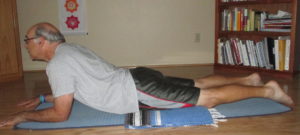
By the way, here’s how NOT to practice Sphinx :
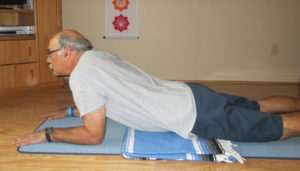
Cautions: Do not perform after first trimester of pregnancy, or if diagnosed with spondylolisthesis. *
Revolved Belly Pose: Two Variations
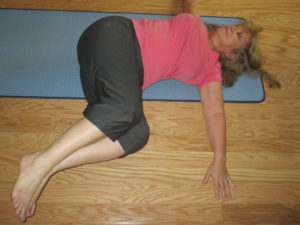
In a core challenge variation, the legs HOVER and do not land on the floor. Use core strength to slowly rotate legs to second side. Repeat slowly 4-6 times to each side.
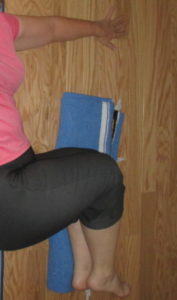
As we wind down a practice one can often hear the audible sighs of release as this twist is performed. The yogis believe that twists physically and emotionally wring out accumulated tension from our being so that fresh perspective as well as fluids can be welcomed into our system. Additionally, this twist can be performed as core strengthener.
Benefits of this Twist:
- The obliques (side muscles of the waist) are lengthened and strengthened.
- The chest muscles, primarily the pectoralis experience a refreshing opening.
- Once strength is built up, variations are many can include top or both legs straight.
- Stimulates the bones of the lumbar and lateral thoracic spine. (Yoga for Osteoporosis, Fishman 2010)
Cautions: Do not perform past first trimester of pregnancy; could relieve or exacerbate acute hip or back pain; use caution. Modified versions may are indicated for colostomy, hernia or spondylolisthesis*
* Yoga for Osteoporosis, by Dr. Loren Fishman MD, and Ellen Saltonstall WW Norton, 2010.
Plank Peel
- The challenge of gravity makes this variation of the all purpose plank pose a fun experiment to gauge how one’s strength increases over time and with regular practice
- Stimulates the muscles along the back vertebrae called the spinal extensors, the rectus abdominus must work as well as the obliques.
- Arms and shoulders are working as well as the breath
- Can be practiced standing at the wall to build strength
How to:
- Begin prone on the mat.
- A block can be utilized between the hands to help maintain alignment. The thumb and pointer finger form an “L” shape at the corner of the block.
- As if slowly peeling a piece of tape off of a wrapped package, keeping hips stable, exhale, peel the belly off the floor.
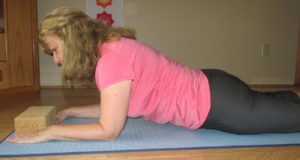
4. If you are able, next, peel the hips.
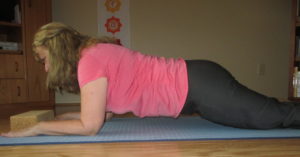
5. Eventually the hips might come off the floor for a forearm plank:
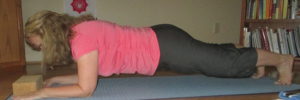

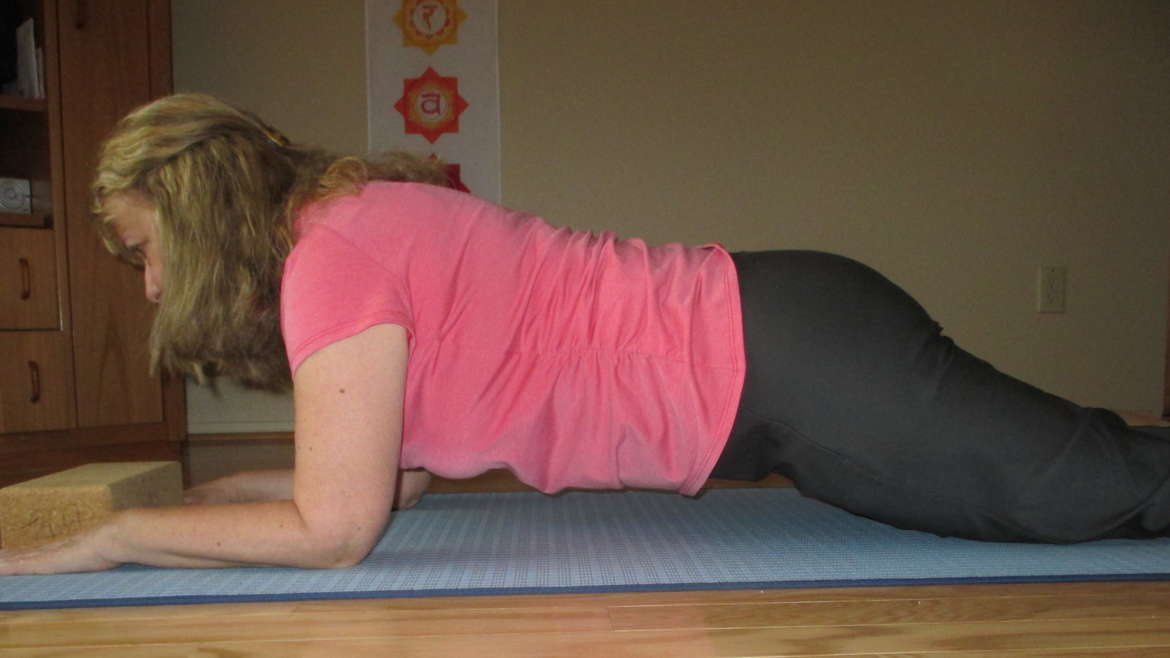
1 Comment
Comments are closed.